Driving safety is of the utmost importance when a winter storm rolls in. Various types of weather events can significantly affect how you drive, and different situations call for very specific steps to stay safe. These tips can help you stay in control of your vehicle as you navigate the roadways.
Remember: Before you attempt to navigate the roads, clear all snow, ice or dirt from your windows, grill, headlights, and tail lights. Never drive with snow or ice piled on top of your vehicle as it can fly off and hit another vehicle or pedestrian or cause a dangerous road obstruction.
Driving In Ice
Driving in icy conditions can be treacherous, and sometimes clear “black” ice will form on the roads. The prime times for black ice to occur are at dawn and late evening when temperatures are coolest. Black ice can form when the air is at 32 degrees or below at the surface and rain is falling; the low temperature causes the precipitation to freeze upon impact, thus creating ice. Sleet and the refreezing of snow or water can also generate black ice.
Tip 1 – Keep a close eye on the road surface
Black ice is notoriously difficult to detect when driving. Pay close attention to the road surface when driving in potentially icy conditions, and watch out for pavement that looks dark, wet, or like new asphalt. If an area has seen very low temperatures, recent precipitation, or has a history of icing, black ice could very well be present on the roadways. Additionally, bridges or elevated roadways are more likely to form ice.
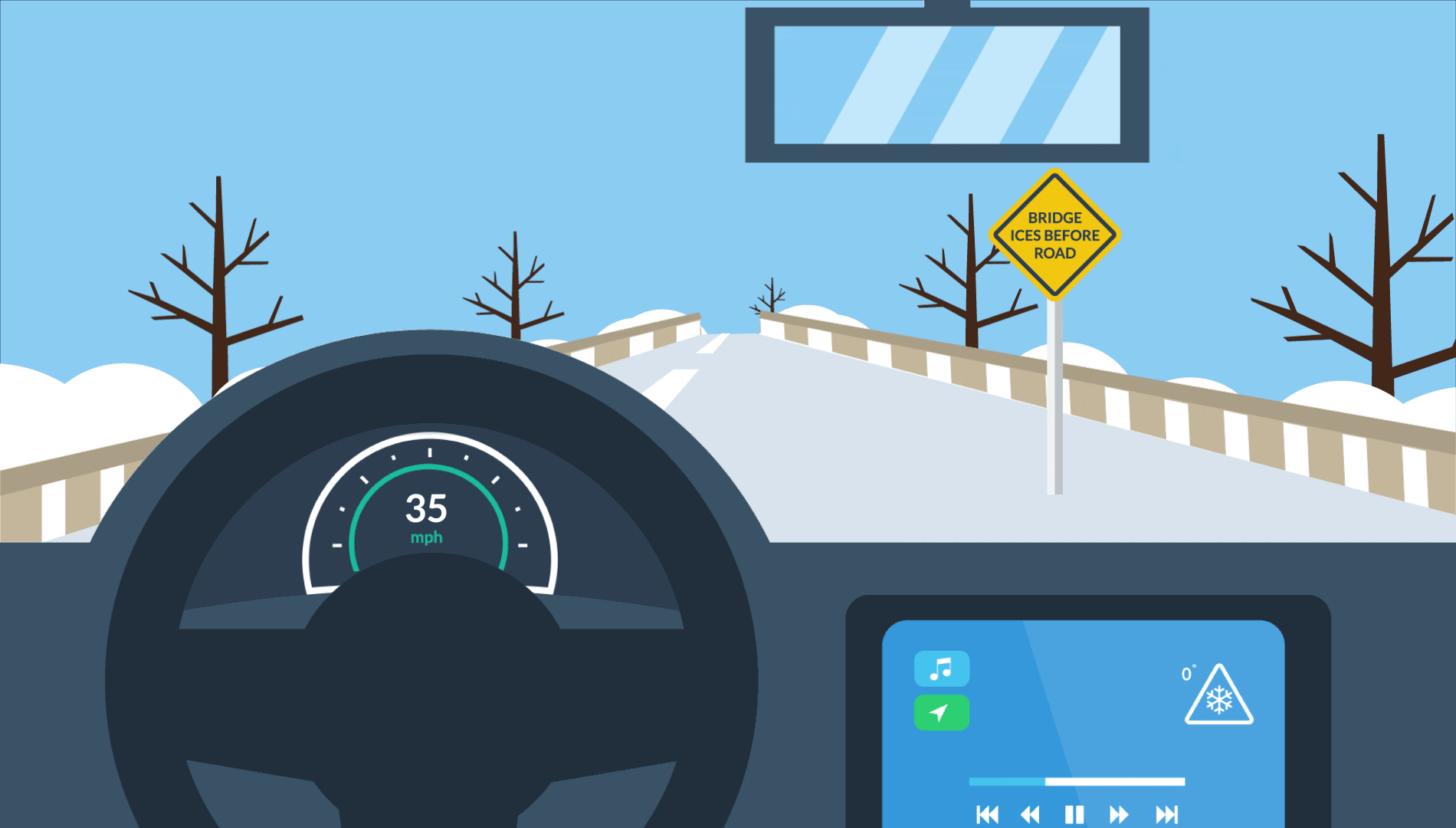
Tip 2 – Know how your vehicle behaves on ice
If you drive on black ice, your vehicle will not respond as well to driver inputs and may behave unpredictably. Avoid over-correcting with the steering wheel or panic braking. Before you get on the road, ensure that large or dangerous objects (whether inside, outside, or on top of the vehicle) are secure. Unsecured loads could result in serious injury should you hit a patch of ice (and can also result in you being pulled over and ticketed). If you are sliding on black ice and unable to stay in control, follow these steps:
- Don’t panic.
- Don’t slam on the brakes.
- Take your foot off the gas.
- Steer your car in the direction you want to go.
- Wait for the car to slow down and the wheels to catch so you can regain control.
Tip 3 – Pay attention to other drivers
If you are in an area where road icing is not common, other drivers may have a difficult time spotting and adapting to icing conditions. Make sure that you give other drivers plenty of space in case they cannot come to a controlled stop. Leave a full 8 seconds or more of driving time in between you and the car in front of you.
Driving In Snow
Snow can come in many different forms, and different types of snow present different dangers. Large, wet snowflakes can pile up quickly and cause slippery road surfaces. Small, light snowflakes can obscure visibility and build ice on windshields and other surfaces.
Tip 1 – Slow down
Snow on roadways can be just as slippery as ice. If you see a buildup of snow on the road in front of you or even just a dusting, understand that you may not have the same level of control that you are used to when turning and braking. Always slow your vehicle speed so you have more time to react to unexpected situations.
Tip 2 – Increase following distance
Even in light snow, braking ability can be severely impaired. Your vehicle can take up to double the distance to stop in snow compared to dry conditions. Ensure that there is at least 8-10 seconds between you and the vehicle in front of you, so you have time to react if the driver ahead loses control or starts to rapidly slow down.
 Tip 3 – Don’t stop on hills
Tip 3 – Don’t stop on hills
Snow can cause tires to spin and lose traction, especially on inclined roadways such as freeway ramps and hills. If you’re making progress up a hill, try not to stop or you risk losing traction. If you’re going down a hill, take it slowly and ensure that you have sufficient braking capability to stop safely. Leave at minimum 3-4 vehicle lengths in between you and the car in front of you to avoid a collision.
Driving In Whiteout Conditions
When snow gets very heavy, it can create dangerous whiteout conditions. Visibility might be limited to just a few feet in front of your windshield, and you might not be able to see the road surface or markings.
Tip 1 – Slow to a snail’s pace
The most dangerous aspect of whiteout conditions is a loss of visibility. Without the ability to see where drivers are and what they are doing, you might not have time to react if they do something unexpected. Ensure that you are driving slowly enough to have ample time to turn or brake if something happens in front of you.
Tip 2 – Make yourself as visible as possible
Whiteout conditions often cause collisions when drivers cannot see each other. Make yourself as visible as you can to others on the road. Use all your headlights (turn on fog lights if you have them). Consider turning on your hazard lights if you drop below the speed limit to alert other drivers. Communicate your intentions (using turn signals and hand gestures if necessary) to those around you so they can adjust accordingly.
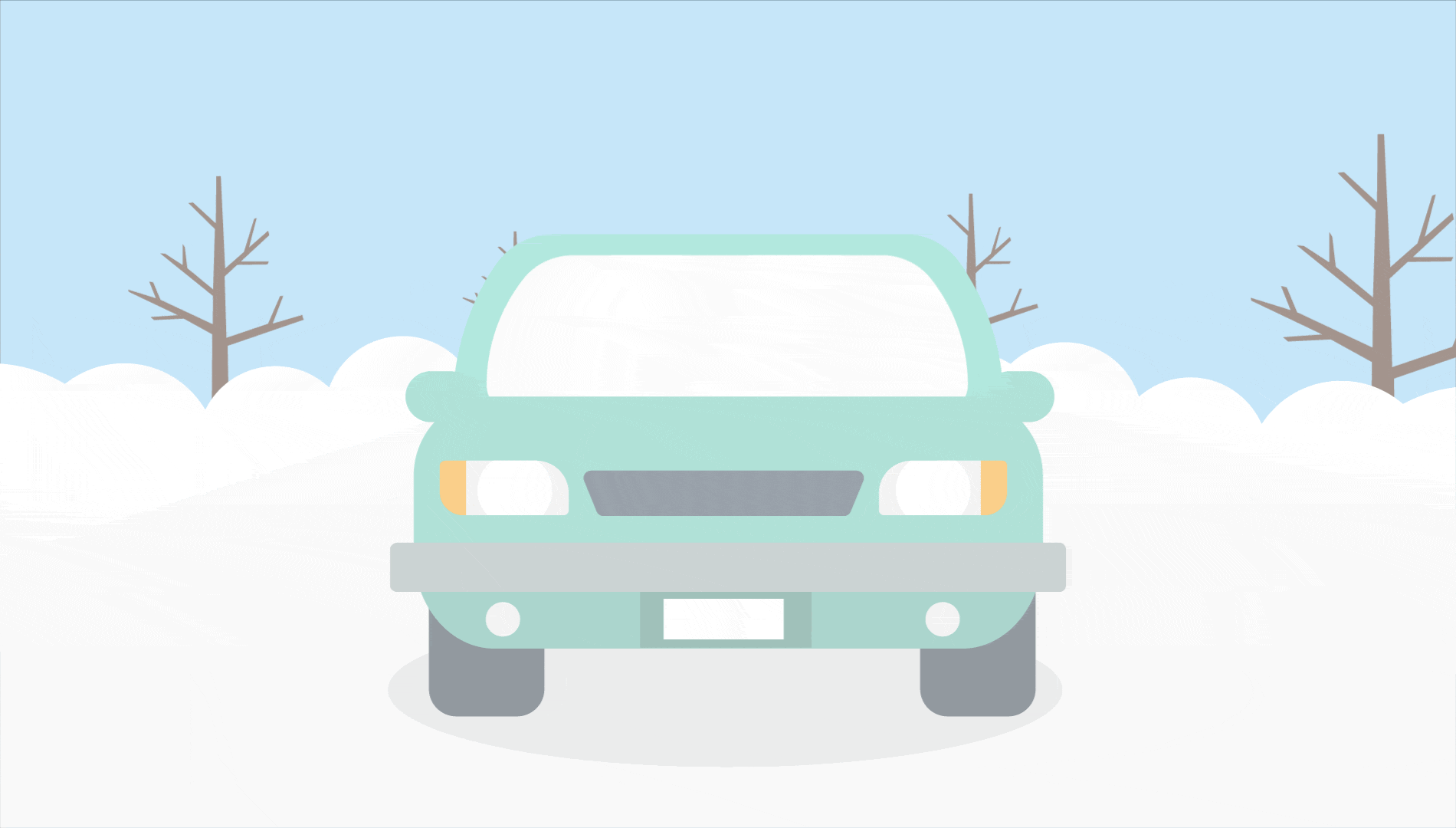 Tip 3 – Stop and wait it out
Tip 3 – Stop and wait it out
If the whiteout conditions completely obstruct your view, or you feel unable to adequately see other vehicles or control your own automobile, look for the nearest exit to wait out the storm. It’s safer if you can get to a shoulder of a road with a lower speed limit to reduce the chances of a high-speed accident where more damage/injuries could occur). If there is no other option, simply pull to the side of the road, turn on your hazard lights, and wait out the whiteout. If needed, run your motor every hour for 10 minutes at a time for heat. Crack the window to avoid carbon monoxide poisoning and periodically clear snow away from the exhaust pipe if the snow is piling up significantly.
Sources: Ready.gov, National Weather Service, Maine Bureau of General Services
Before a storm hits, review our Extreme Weather Driving Guide.
If you’re ever stranded on the road, having Emergency Roadside Service (ERS) is essential–and it’s available at your fingertips through your GEICO Mobile app! Add ERS to your policy for just pennies a day per vehicle and have peace of mind while you battle the elements.




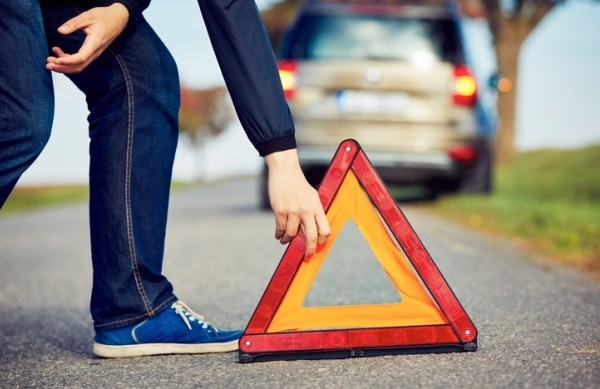
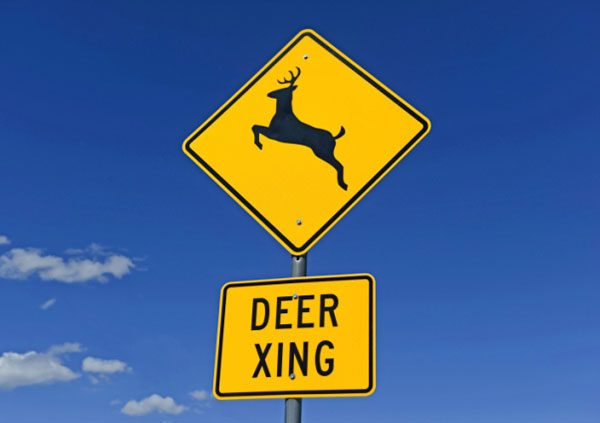



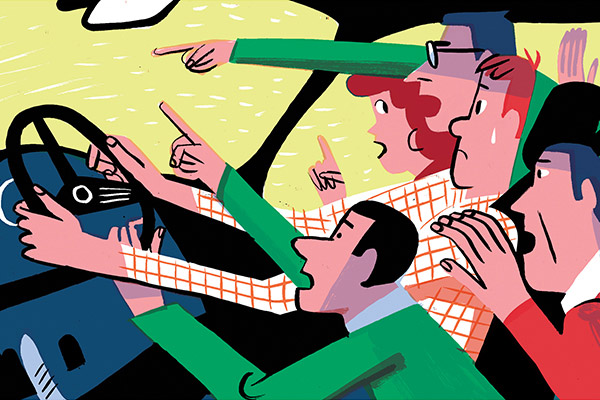
Brian says,
Did I miss something here? I don’t see any mention of actually using snow tires for driving in snow. In my opinion all season tires just don’t do it. Snow tires have different and better compounds and tread design that make them a must for winter driving.
Ginger says,
Good advice.
Hope Mitchell says,
Thank you, this was very helpful.
LENON HICKMAN says,
When driving in snow every ten miles an hour you are driving stay at least four car lengths behind the car you are following for fewer accidents. It only takes a few seconds for it to happen.
Wanda says,
If I am going down a slippery hill I down shift my car so I do not have to break. I always buy a good winter car and have good tires.
Fay says,
Since I’m retired, I’d stay home out the inclement weather conditions. But, first be sure there’s ample food and water on hand for several days.
Becky Myers says,
Yep, I don’t drive in snowy, icy weather unless it is absolutely necessary. In fact, at my age I try not to drive in rain or darkness. I don’t get out much any more.
Rob Palmer says,
Starting out in a snowstorm–if light traffic and plenty of space, don’t creep out as many do, but speed off into a tight turn. Then you will see where the “breaking point” is (at what speed), and this will help you navigate. However, with heavy traffic and no space to maneuver, wait until you have a larger playing field.
Arnold Valencia says,
It is also important to consider not driving at all if the weather conditions worsens,check the news for the local weather conditions to your destination. Let’s all do our part on keeping ourselves,our families and everyone else on the road safe this winter.
PS. Tnx Geico for your great and very helpful winter driving advice, we can all use it.
Dan says,
I am 85 yeards old and love geico! BEST INFO EVER. Who would know how to drive car without Geico?! 😀
Naba K Das says,
Very informative. Thanks for the tips for driving in snow. We appreciate Geico’s help in these kinds of information. We are thankful for being Geico’s policy holder. Keep up with the good work.
Brad Johnson says,
Another tip for checking for clear/black is to view the bottom of the tires of the vehicle in front of. Can be hard to see, but a splashup would give you slightly better confidence, though conditions can change in even short distances.
Anthony Diottaviano says,
Outstanding information. Really appreciate the communication from GEICO regarding minimizing my risk while driving in hazardous conditions, in which, I just had to drive to work this morning while the roads were covered in snow, and the snow falling pretty rapidly. Thanks again for the continual lessons.
Richard Marsan says,
in snow going down steep hill, put shift lever in neutral. It prevents the transmission of pulling the auto forward.
Mohamed says,
Very good information
WILLIAM LANDAU says,
I HAVE BEEN DRIVING IN NEW YORK FOR OVER 40 YEARS AND ALL GEICO TELLS DRIVERS I DO,EXCEPT IN ICE ,SNOW,HEAVY RAIN I PUT MY CAR FROM 1ST TO SECOND GEAR WHILE THE ROAD CONDITIONS AVAIL,LIKE 5 MINTS OR SO AND PUT THE CAR IN DRIVE IF THE CONDITIONS PERMIT ALSO I HONK MY HORN IF A CAR COMES TOO CLOSE. P.S.I INSURE MY CAR WITH GEICO. IN ADDITION IF YOU HAVE ALL WHEEL DRIVE YOU ARE NOT INMUNE TO THE 2 WHEEL DRIVE CARS HAVE,
Carol Torcivia says,
Very good tips, some I knew but I also learned some new ones. Thanks everyone!